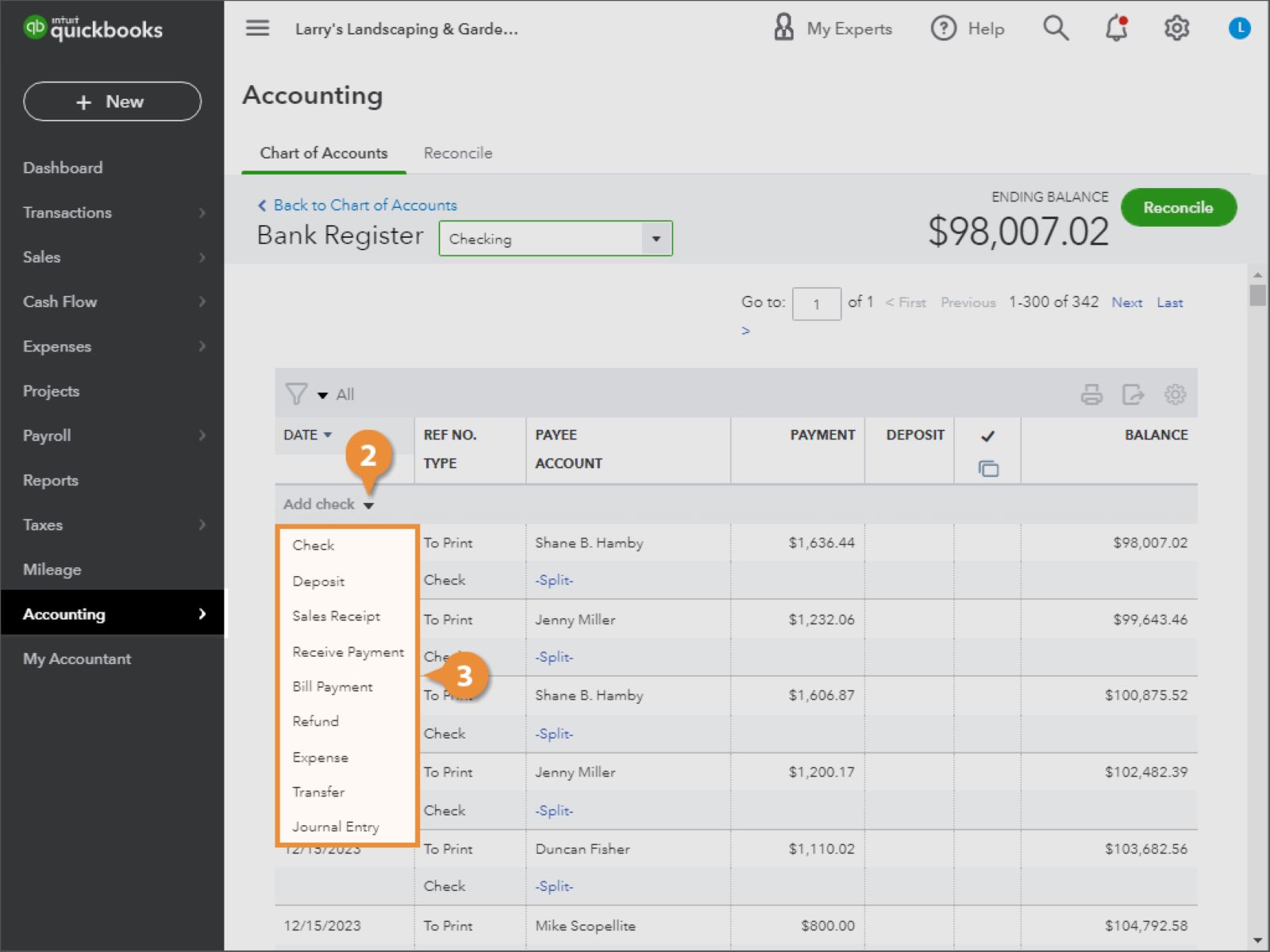Introduction
QuickBooks Online is a powerful accounting software used by millions of businesses to manage their finances. One of its key features is the ability to import data from Excel, making it easier and faster to set up your company’s financial records. This feature saves time and minimizes errors by allowing you to directly import important lists, such as customer information, vendor details, item catalog, and chart of accounts, directly from an Excel file into QuickBooks Online.
Importing lists from Excel can be a game-changer for businesses migrating from manual or outdated accounting systems. It eliminates the need for manual data entry, reducing the risk of human errors and saving valuable resources. With the ability to import these lists, you can seamlessly transfer and organize your data, ensuring a smooth transition to QuickBooks Online.
This article will explore the four list types that can be directly imported into QuickBooks Online from Excel. By understanding how to import these lists, you will be able to efficiently set up your accounting system, save time, and focus on running your business.
Customer List
The customer list is a crucial component of any business’s accounting system. It includes detailed information about your customers, such as their names, contact information, billing addresses, payment terms, and other relevant details. Importing the customer list from Excel into QuickBooks Online can help you streamline your sales process and effectively manage your customer relationships.
To import your customer list, you need to ensure that your Excel file is properly formatted. The column headers in the Excel file should match the corresponding fields in QuickBooks Online. These fields may include customer name, email address, phone number, billing address, payment terms, and any custom fields you have set up in QuickBooks Online.
Once your Excel file is ready, you can navigate to the Customer Center in QuickBooks Online. From there, click on the “Excel” button and select “Import from Excel.” Follow the prompts to browse for your file, map the fields from the Excel file to the corresponding fields in QuickBooks Online, and complete the import process. QuickBooks Online will validate and import the customer list, ensuring that all the information is accurately recorded.
Importing your customer list from Excel into QuickBooks Online offers several benefits. Firstly, it saves you time by eliminating the need for manual data entry. Secondly, it reduces the risk of errors, ensuring that your customer information is stored accurately. Lastly, it provides a seamless transfer of data, allowing you to quickly start invoicing and managing your customer accounts within QuickBooks Online.
By efficiently importing and managing your customer list in QuickBooks Online, you can improve your sales process, maintain accurate customer records, and enhance overall customer satisfaction.
Vendor List
The vendor list is an important part of your business’s accounting system as it contains crucial information about the vendors or suppliers you work with. Importing your vendor list from Excel directly into QuickBooks Online allows you to easily manage your relationships, track expenses, and streamline your purchasing process.
To import your vendor list, you need to prepare your Excel file by ensuring that the column headers match the fields in QuickBooks Online. The Excel file should ideally include vendor names, contact information, payment terms, billing addresses, and any additional details relevant to your business. This ensures a smooth and accurate import process.
In QuickBooks Online, navigate to the Vendor Center and click on the “Excel” button. Choose the option to import from Excel and follow the instructions to locate and upload your file. You will then be prompted to map the fields in the Excel file to the corresponding fields in QuickBooks Online, such as vendor name, email, address, and payment terms. Once the mapping is complete, QuickBooks Online will validate the data and import your vendor list.
The benefits of importing your vendor list from Excel into QuickBooks Online are numerous. It eliminates the need for manual data entry, saving you time and reducing the risk of errors. By having accurate vendor information readily available, you can efficiently track your expenses, manage your accounts payable, and maintain a strong relationship with your suppliers.
Moreover, with your vendor list readily available in QuickBooks Online, you can easily generate reports, track payment due dates, and streamline your purchasing process. This level of organization and automation can significantly improve your business’s efficiency and productivity.
By utilizing QuickBooks Online’s import functionality, you can seamlessly transfer your vendor list from Excel, ensuring accurate and up-to-date vendor information without the hassle of manual entry.
Item List
The item list is a vital component of your inventory management and sales process. It contains detailed information about the products or services your business offers, such as item names, descriptions, prices, SKU numbers, and other relevant details. Importing the item list from Excel directly into QuickBooks Online allows you to efficiently organize your inventory and streamline your sales transactions.
To import your item list, start by ensuring that your Excel file is properly formatted. The column headers in the Excel file should match the corresponding fields in QuickBooks Online, such as item name, description, price, and other item-specific details. This ensures a smooth and accurate import process.
In QuickBooks Online, navigate to the Item List and click on the “Excel” button. Choose the option to import from Excel and follow the prompts to locate and upload your file. You will then need to map the fields in the Excel file to the corresponding fields in QuickBooks Online, such as item name, description, price, SKU, and any custom fields you have set up. QuickBooks Online will validate the data and import your item list, ensuring that all the information is accurately reflected in your inventory records.
Importing your item list from Excel into QuickBooks Online offers several advantages. Firstly, it saves you time and effort by eliminating the need for manual data entry. Secondly, it ensures accurate recordkeeping of your inventory, including item descriptions, prices, and SKUs. Lastly, it allows for seamless integration with your sales transactions, making it easier to generate invoices and track inventory levels.
By importing and managing your item list directly in QuickBooks Online, you can effectively track and manage your inventory, optimize your sales processes, and provide accurate pricing and descriptions to your customers. This level of organization and automation can greatly enhance your business’s efficiency and profitability.
Chart of Accounts List
The chart of accounts is a fundamental part of any business’s financial management system. It provides a comprehensive list of all the accounts used to track the company’s financial transactions and organize its financial data. Importing the chart of accounts list from Excel directly into QuickBooks Online is crucial for setting up your accounting system accurately and efficiently.
Before importing your chart of accounts list, you need to ensure that your Excel file is properly formatted. This includes setting up the appropriate column headers for account names, types, numbers, and other relevant information. By aligning the Excel file columns with the corresponding fields in QuickBooks Online, you can streamline the import process.
In QuickBooks Online, navigate to the Chart of Accounts and click on the “Excel” button. Choose the option to import from Excel and follow the prompts to locate and upload your file. You will then be prompted to map the fields in the Excel file to the corresponding fields in QuickBooks Online, such as account name, account type, and account number. Once the mapping is complete, QuickBooks Online will validate the data and import your chart of accounts list.
The ability to import the chart of accounts list directly from Excel offers several benefits for your business. Firstly, it saves you time compared to manually entering each account individually. Secondly, it ensures accuracy by avoiding manual data entry errors. Lastly, it allows for a seamless transition to QuickBooks Online, ensuring proper organization and reporting of your financial data.
By having a well-structured and accurate chart of accounts list in QuickBooks Online, you can effectively track your income, expenses, assets, liabilities, and equity. This enables you to generate accurate financial reports, track business performance, and make informed financial decisions.
Therefore, importing your chart of accounts list from Excel into QuickBooks Online is a crucial step in setting up your accounting system effectively and ensuring accurate financial reporting and analysis.
Conclusion
Importing lists directly from Excel into QuickBooks Online is a valuable feature that allows businesses to set up their accounting system efficiently and accurately. The ability to import the customer list, vendor list, item list, and chart of accounts list saves time, reduces errors, and ensures a seamless transition to QuickBooks Online.
By importing the customer list, businesses can streamline their sales process, manage customer relationships effectively, and improve overall customer satisfaction. Similarly, importing the vendor list enables businesses to track expenses, manage accounts payable, and maintain strong relationships with suppliers.
Importing the item list from Excel simplifies inventory management, streamlines sales transactions, and ensures accurate pricing and descriptions for products or services. Additionally, importing the chart of accounts list ensures proper organization and reporting of financial data, enabling businesses to generate accurate financial reports and make informed financial decisions.
The benefits of importing these lists are significant. It saves time by eliminating the need for manual data entry, reduces the risk of errors, and provides a seamless transfer of data. This level of organization and automation leads to improved efficiency, productivity, and profitability for businesses.
Therefore, taking advantage of QuickBooks Online’s import functionality for these lists is highly recommended for businesses looking to streamline their accounting processes and focus on their core operations. By leveraging the power of this feature, businesses can set up their accounting system quickly, maintain accurate records, and make informed financial decisions with ease.
Whether you are migrating from a manual system or looking to improve your existing QuickBooks Online setup, importing lists from Excel is a valuable tool to consider. With the ability to import the customer list, vendor list, item list, and chart of accounts list, businesses can optimize their financial management and focus on driving growth and success.

























